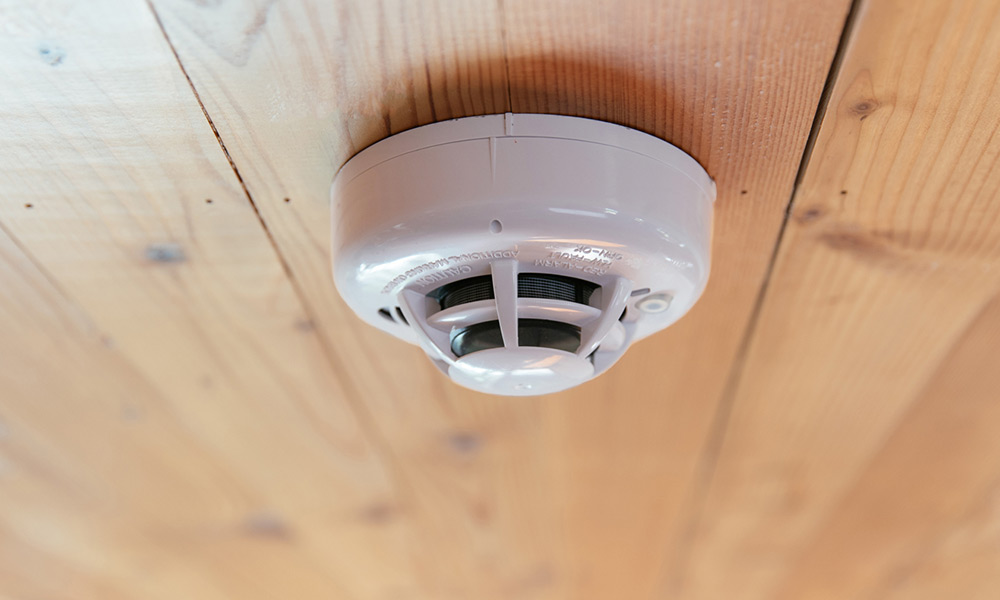
By: James Curtiss on October 5th, 2022
When Is a Fire Alarm System Required in a Commercial Building?
Modern fire safety technology extends the usefulness of commercial building fire alarms from the everyday pull station variety, allowing you to choose options that speed up response and evacuation times. Different regulations cover certain building types and occupancy levels.
Use the International Building Code (IBC) along with local regulations to ensure your building complies with all fire codes. Below we provide an overview of commercial building fire alarm requirements.
Group A: Places of Assembly
Any space allowing up to at least 300 occupants, or educational or instructional spaces allowing up to 75 occupants, falls under Group A.
This includes buildings such as:
- Event spaces
- Worship centers
- Recreation centers
- Bars and restaurants
- Nightclubs
- Movie theaters
Group A facilities must have manual pull stations, carbon monoxide detectors, control relay, monitor modules, and an alarm system to remain compliant.
Group B: Offices and Service Providers
Offices and private or public service providers fall under Group B. Buildings under this section sometimes have an automatic sprinkler system. Other conditions include an occupancy level of 500 or more if floors above or below the lowest exit point allow over 100 occupants and buildings with ambulatory healthcare facility areas.
Some examples of Group B facilities include:
- Office areas
- Insurance agencies
- Police stations
- Banks
Group B facilities must have manual pull stations, smoke and heat detectors, and control relay and monitor modules.
Group E: Educational Centers
Any building belonging to group E must have manual pull stations, smoke detectors, control relay, and monitor modules regardless of maximum occupancy. Schools and daycares belong to Group E so long as they fit these standards:
- Education up to 12th grade
- At least five persons in the building simultaneously
- Two or fewer children under the age of two
In some cases, storm shelters may classify as Group E.
Group F: Factory and Industrial
Factories, manufacturing or processing facilities, and other industrial buildings classify as Group F if they have a maximum occupancy of 100 or more or if floors above or below the lowest building exit have at least 25 occupants. Some of these buildings include factories producing:
- Musical instruments
- Furniture
- Clothing
- Paper goods or products
Buildings under Group F require manual pull stations, carbon monoxide detectors, and control relay and monitor modules.
Group H: High Hazard
High-hazard factories manufacture products using dangerous materials such as:
- Cryogenic fluids
- Oxidizers
- Flammable gasses or solids
- Corrosive materials
Mandatory fire alarm conditions include subgroup H-5, which includes fabrication areas using hazardous materials, and plants manufacturing organic coatings regardless of size. Required fire alarm devices include manual pull stations, carbon monoxide detectors, and control relay and monitor modules.
Group I: Institutional
Regardless of occupancy, all buildings classified as Group I must have manual pull stations, an alarm communication system, carbon monoxide detectors, notification devices, and control relay and monitor modules. Buildings considered Group I include residential facilities offering full or part-time caretakers. Some Group I buildings include:
- Assisted living facilities
- Nursing homes
- Psychiatric hospitals
- Jails and prisons
Group M: Mercantile
All retail stores fall under Group M regarding commercial building fire alarm requirements. Group M commercial buildings require manual pull stations, notification devices, and control relay and monitor modules. The mandatory fire alarm conditions tailor themselves to the various sizes of retail buildings:
- A single room over 12,000 sq. ft.
- Taller than three stories
- Combined rooms across all floors exceeding 24,000 sq. ft.
- A space below grade of more than 1,500 sq. ft.
Some examples of Group M buildings include:
- Department stores
- Drug stores
- Sales rooms
- Greenhouses
Group R: Residential
Regardless of occupancy, all Group R buildings require smoke detectors, control relay, and monitor modules. High-rise buildings must have a two-way communication system. Group R buildings include:
- Apartments
- Hotels and motels
- Timeshare properties
- Convents and monasteries
For professional assistance in defining your building and ensuring compliance with commercial building fire alarm requirements, consult your local fire department or call Sonitrol New England at (860) 407-5677.

